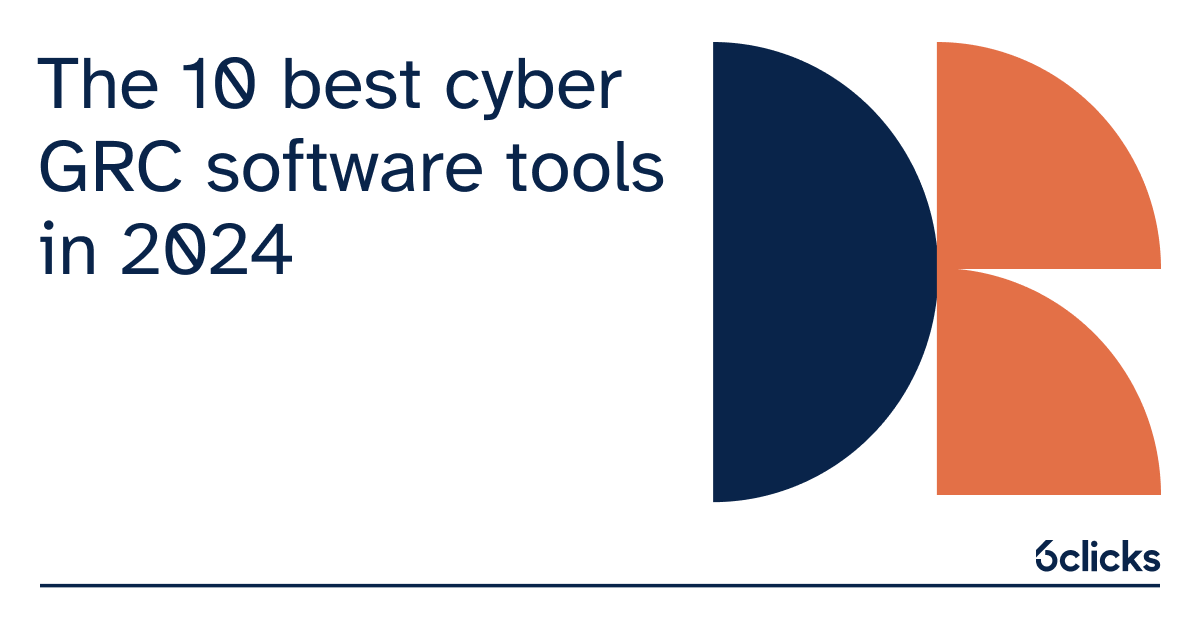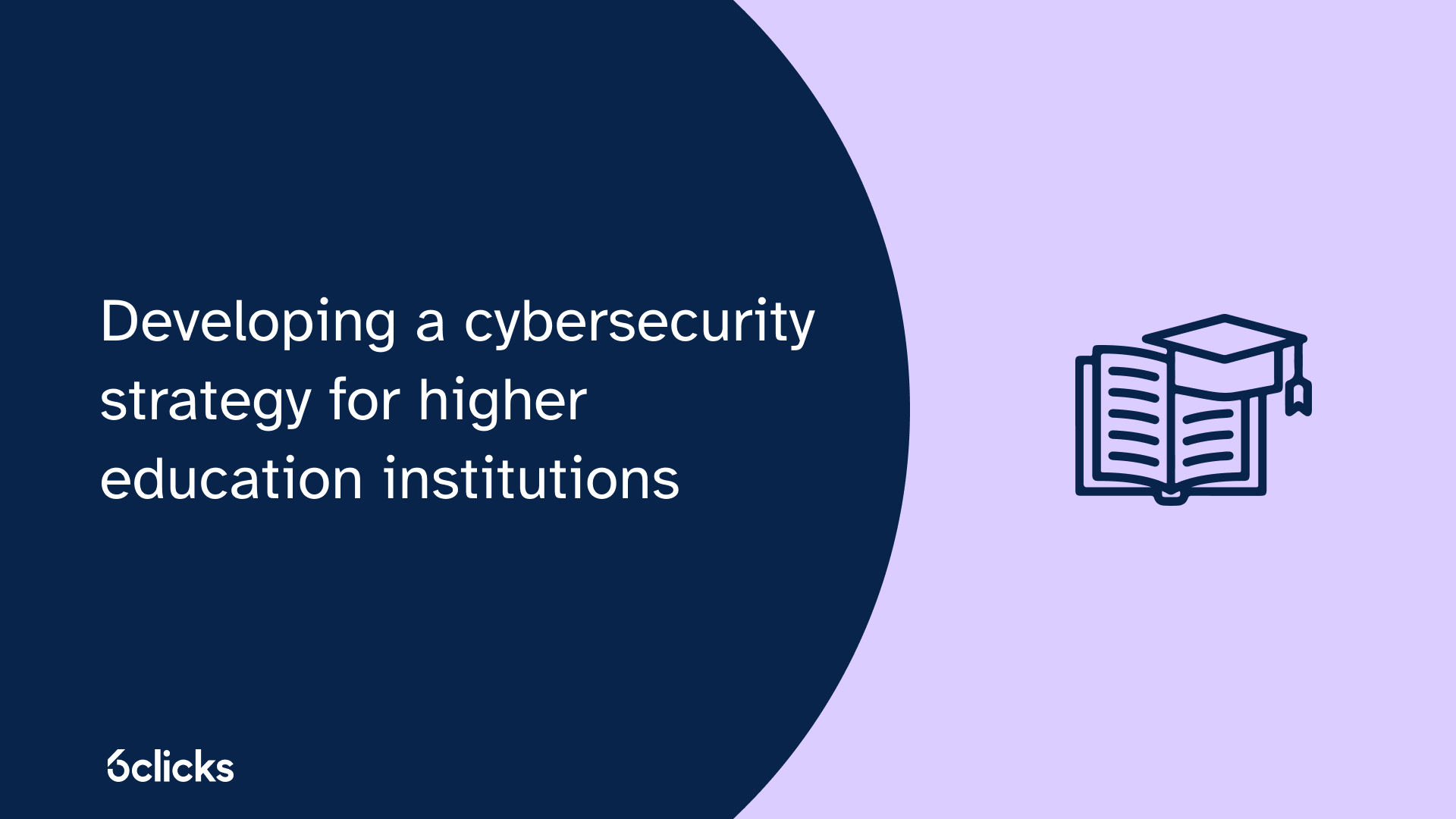What is the ASD Essential Eight model?
What is the ASD essential eight model?
The ASD Essential Eight Model, developed by the Australian Signals Directorate (ASD), is a set of eight mitigation strategies that provide a baseline level of security against cyber threats. These strategies focus on protecting organizations' systems and data from various cyber security incidents. The model is aimed at improving the cyber security posture of Australian businesses and government agencies by addressing the most common and significant cyber threats. The Essential Eight Model covers a range of security controls and measures, including patching operating systems and applications, hardening user applications, restricting administrative privileges, implementing multi-factor authentication, and performing regular backups. By following the Essential Eight Model, organizations can enhance their security posture and mitigate the risks associated with cyber incidents and malicious activities.
Benefits of the model
The ASD Essential Eight model is a framework developed by the Australian Signals Directorate (ASD) to assist businesses in improving their cyber security posture and mitigating potential cyber threats. Implementing the model offers several benefits to organizations, helping them to enhance their overall security posture and protect against various vulnerabilities.
One of the key benefits of the ASD Essential Eight model is improved vulnerability management. By adhering to the model's recommended strategies, businesses can effectively identify and address security vulnerabilities in their systems and applications. This proactive approach enables organizations to stay one step ahead of potential cyber threats and reduces the likelihood of successful attacks.
Furthermore, the model emphasizes the importance of access control, particularly through the implementation of multi-factor authentication. By requiring users to provide multiple forms of identification, such as passwords and biometrics, organizations can significantly enhance their access control capabilities. This helps prevent unauthorized access to critical systems and sensitive information, making it harder for cybercriminals to infiltrate networks.
Additionally, the ASD Essential Eight model provides increased protection against malicious code. By implementing strategies such as application whitelisting and restricting administrative privileges, organizations can minimize the risk of malware delivery and execution. These measures significantly reduce the attack surface and aid in preventing cyber incidents caused by malicious code.
Maturity levels
The ASD Essential Eight model helps organizations improve their cybersecurity posture by providing a framework to assess and enhance their maturity levels. Maturity levels indicate the level of capability and effectiveness in implementing essential mitigation strategies to protect against cyber threats. By evaluating their current maturity level and implementing additional mitigation strategies, organizations can steadily progress towards a higher level of maturity. This allows them to better identify and address security vulnerabilities, strengthen access control measures, and protect against malicious code. In doing so, organizations can significantly reduce the risk of cyber incidents and enhance their overall security posture.
Level 1 – Non-existent
At Level 1 of the ASD Essential Eight model, the organization's cyber security posture is considered non-existent. This means that the business has not implemented any of the essential mitigation strategies outlined in the model to protect its systems and data from cyber threats.
At this level, the weaknesses in the business's cyber security posture are significant. With no security controls in place, the organization is highly vulnerable to cyber attacks and is at risk of compromising the confidentiality, integrity, and availability of its systems and data.
Without any security measures, the business is more likely to fall victim to common types of attacks such as malware delivery, malicious code execution, and unauthorized access to systems. These attacks can result in severe consequences, including the theft of sensitive information, unauthorized modification or destruction of data, and disruption or unavailability of critical systems.
Additionally, a lack of security controls leaves the organization exposed to potential exploitation by threat actors. Hackers can easily gain access to unsecured systems and leverage them as entry points to launch more sophisticated attacks or move laterally within the network to compromise other assets.
Level 2 – Partially implemented
Partially implemented, the organization's cyber security posture is at a higher level compared to Level 1. This level is particularly suitable for Australian businesses that do not have significant uptime, data security, or financial protection requirements. However, it is important to note that this level is still not comprehensive and requires further improvement to adequately protect against cyber threats.
At this level of maturity, the focus is on adversaries with slightly advanced capabilities, who invest more time and effort to bypass security controls and target credentials through phishing and social engineering techniques. These adversaries are more sophisticated and pose a greater risk to the organization's systems and data.
They employ various methods to breach security controls, including exploiting weak multi-factor authentication, launching phishing attacks, exploiting system vulnerabilities such as Microsoft Office macros, and targeting accounts with special privileges. These techniques allow them to gain unauthorized access or compromise the organization's systems.
To advance to higher maturity levels, Australian businesses at Level 2 must strengthen their security controls and implement additional mitigation strategies. This may include implementing stronger multi-factor authentication methods, training employees to recognize and avoid phishing attacks, regularly patching operating systems and applications to address vulnerabilities, and closely managing and monitoring privileged accounts.
Level 3 – Standardised and managed
Standardised and managed is an essential maturity level appropriate for mid-sized and larger businesses that heavily rely on multiple critical systems and handle significant amounts of personally identifiable information or financial data. At this level, the focus shifts towards adversaries who possess highly adaptive capabilities and are less reliant on public tools and techniques commonly used by less sophisticated attackers.
These adversaries employ advanced strategies and tactics to breach an organization's security controls and target its valuable assets. They may exploit vulnerabilities in the organization's network devices or target privileged users with extensive access to systems and sensitive information. By doing so, they can potentially compromise critical systems or gain unauthorized access to personally identifiable information, leading to severe financial and reputational consequences for the business.
To counter the threats posed at Level 3, organizations must implement standard security controls and management practices. This includes regular patching of operating systems, applications, and network devices to address vulnerabilities. It also involves enforcing strong access controls, privileged access management, and application control mechanisms. In addition, daily backups of critical systems and regular vulnerability assessments should be conducted to ensure the organization's overall cyber security posture.
By reaching Level 3 - Standardised and managed, businesses demonstrate their commitment to protecting their critical systems and safeguarding the personally identifiable information entrusted to them. This level of maturity helps mitigate the risks associated with cyber threats and ensures a strong and resilient security posture.
Level 4 - Automated and monitored
Level 4 of the ASD Essential Eight model, known as 'Automated and monitored,' is designed for mid-sized and larger businesses that handle multiple critical systems and possess significant amounts of personally identifiable information or financial data. At this level of maturity, organizations focus on countering highly adaptive adversaries who exploit weaknesses in cybersecurity, utilize new exploits, and employ social engineering techniques to breach their defenses.
To achieve the level 4 target maturity, organizations prioritize measures that involve automating security processes and continuously monitoring their environment for potential cyber threats. This includes implementing tools and solutions that can detect and respond to security incidents in real-time, minimizing the impact of an attack. Additionally, organizations establish a centralized logging mechanism to collect and analyze security-related data, enabling proactive identification of potential vulnerabilities and security anomalies.
Mid-sized and larger businesses with critical systems and sensitive data can greatly benefit from this level of maturity. By automating security processes and maintaining continuous monitoring, they can enhance their ability to detect and respond to evolving cyber threats in a timely manner. This proactive approach can significantly reduce the risk of successful attacks and minimize potential financial and reputational damage.
Multi-factor authentication
Multi-factor authentication is a crucial component of a robust cybersecurity posture. It adds an extra layer of security to the traditional username and password combination by requiring users to verify their identity through multiple factors. This typically includes something the user knows (like a password), something the user has (like a mobile device), or something the user is (like a fingerprint). By implementing multi-factor authentication, organizations can significantly reduce the risk of unauthorized access to their systems and data. This is especially important considering the increasing number and sophistication of cyber threats targeting businesses. Multi-factor authentication helps mitigate the risk of unauthorized access even if credentials are compromised, providing an additional barrier to threat actors. It is essential for organizations to prioritize the implementation of multi-factor authentication as part of their overall cybersecurity strategy to safeguard critical systems and sensitive information from unauthorized access and potential data breaches.
How does it work?
The Essential Eight model is a comprehensive framework consisting of eight cybersecurity controls or mitigation strategies designed to prevent malware attacks and mitigate possible cyber threats. It is an extension of the Top Four strategies developed by the Australian Signals Directorate (ASD) to enhance the security posture of Australian businesses.
The purpose of the Essential Eight model is to provide Australian organizations with a practical set of cybersecurity measures that can be implemented to defend against a wide range of cyber threats. These controls are recommended for all businesses, regardless of size or industry, to ensure a strong cyber security posture.
The eight controls included in the Essential Eight model are:
- Application whitelisting: Restricting the execution of unauthorized software in an organization's environment.
- Patching applications: Regularly updating applications to close security vulnerabilities and protect against malicious code.
- Configuring Microsoft Office Macro Settings: Limiting the execution of malicious macros in Microsoft Office documents.
- Patching operating systems: Applying security patches and updates to operating systems to address vulnerabilities.
- Restricting administrative privileges: Limiting administrative access to critical systems and privileged accounts.
- Multi-factor authentication: Implementing stronger authentication methods, such as the use of additional factors like biometrics or tokens, to verify user identity.
- Daily backups: Conducting regular backups of important data to ensure quick recovery in the event of a cyber incident.
- Intrusion detection and prevention systems: Deploying security controls that monitor network traffic for signs of unauthorized access or malicious activity.
By implementing these controls, organizations can significantly improve their security posture and reduce the risk of cyber threats. The Essential Eight model provides a framework for organizations to assess their current level of maturity and identify additional mitigation strategies to strengthen their cyber defenses.
Benefits of multi-Factor authentication
Multi-Factor Authentication (MFA) is an essential control included in the ASD Essential Eight model to enhance the overall security posture of organizations. By requiring users to provide multiple forms of identification, MFA significantly strengthens the authentication process and mitigates the risk of unauthorized access to sensitive information and systems.
One of the key benefits of MFA is that it introduces additional security prompts during the login process. Instead of relying solely on passwords, users are required to provide additional factors to confirm their identity. This prevents cybercriminals from exploiting weak or stolen passwords and reduces the risk of credential-based attacks.
Implementing MFA as part of the ASD Essential Eight model allows organizations to choose from a variety of methodologies to suit their specific needs. These include U2F security keys, physical one-time PIN tokens, biometrics such as fingerprint or facial recognition, smartcards, mobile apps, SMS messages, emails, voice calls, and software certificates. Each of these methods provides an extra layer of security by requiring users to present something they know (e.g., password) and something they have (e.g., token or fingerprint).
By incorporating multi-Factor Authentication into their security controls, organizations can better protect their data, systems, and networks from unauthorized access. This control plays a crucial role in reducing the risk of cyber threats and enhances the overall security posture of Australian businesses.
Implementing MFA in the essential eight model
Implementing multi-factor authentication (MFA) as part of the ASD Essential Eight model is essential for enhancing cybersecurity. MFA provides an additional layer of protection by requiring users to provide multiple factors to verify their identity. This greatly reduces the risk of credential-based attacks and strengthens the overall security posture of an organization.
To implement MFA in the ASD Essential Eight model, organizations can follow these steps:
- Assess the current security posture: Evaluate the existing authentication methods and identify potential vulnerabilities that MFA can address.
- Determine the appropriate MFA methods: Select the MFA methodologies that best align with the organization's needs and infrastructure. This can include options such as U2F security keys, biometrics, smartcards, mobile apps, SMS messages, and more.
- Plan the implementation: Create a detailed plan outlining the resources needed, timeline, and potential impact on users. Consider any integration requirements with existing systems.
- Test and configure MFA: Deploy and configure the chosen MFA methods across the organization's systems, applications, and devices. This may involve integrating with identity and access management systems.
- Educate and train users: Provide comprehensive training for users on the new MFA processes and educate them on the importance of using strong authentication factors.
By implementing MFA in the ASD Essential Eight model, organizations can benefit from enhanced security controls, reduced risk of cyber threats, and improved protection for critical systems and data. MFA ensures that only authorized users have access to business systems, mitigates the risk of password-related attacks, and strengthens the resilience of an organization's cybersecurity posture.
Cyber threats
Cyber threats continue to pose significant risks to organizations, regardless of their size or industry. With the increasing sophistication of threat actors and the evolving threat landscape, it has become crucial for businesses to prioritize and enhance their cybersecurity measures. Cyber threats encompass a wide range of malicious activities, including but not limited to, unauthorized access to systems, data breaches, malware delivery, and exploitation of security vulnerabilities in operating systems and applications. These threats can result in severe financial and reputational damage, as well as potential legal and regulatory consequences. To effectively combat cyber threats, organizations need to implement robust mitigation strategies and ensure that their security controls and configurations are up to date. By adopting a proactive mindset and staying informed about the latest cyber threats, businesses can better protect themselves against potential attacks.
Common cybersecurity threats to businesses
Common cybersecurity threats pose a significant risk to businesses worldwide. These threats include cyber attacks from malicious actors who exploit vulnerabilities in operating systems and applications, targeting critical business systems. Malicious code is often used as a vehicle for cyber attacks, enabling hackers to gain unauthorized access to sensitive data or disrupt business operations.
To mitigate these threats, businesses should implement robust cybersecurity measures and follow essential mitigation strategies. These strategies may include regular backups of critical systems and data, patching operating systems and applications to address security vulnerabilities, and implementing strong access controls, such as privileged access management and multi-factor authentication.
To further strengthen cybersecurity posture, businesses should regularly assess their maturity level in terms of cybersecurity practices. This can be done through the ASD Essential Eight Maturity Model, which provides guidance on implementing effective security controls across various areas, including patching applications, restricting administrative privileges, and configuring settings to limit potential risks.
By proactively addressing cyber threats and implementing appropriate mitigation strategies, businesses can protect their data, systems, and operations from the ever-evolving threat landscape. This ultimately enhances their overall cybersecurity posture and aligns them with best practices for protecting against potential cyber incidents.
Mitigation strategies for cyber threats
Mitigating cyber threats is essential for businesses to protect their systems, data, and overall security posture. Implementing effective strategies based on the level of risk is crucial, with a focus on prioritizing high-risk users and computers.
The Australian Signals Directorate (ASD) recommends specific mitigation strategies to enhance cybersecurity resilience. These include preventing malware delivery and execution through email filtering and user application hardening. By patching applications promptly, businesses can address security vulnerabilities and reduce the risk of exploitation. Additionally, configuring Microsoft Office macro settings helps limit the potential for malicious code execution.
In addition to the strategies outlined by the ASD, Kaine Mathrick Tech suggests considering other factors to strengthen cybersecurity. Regularly backing up data is vital to recover from cyber incidents effectively. Protecting office equipment and ensuring mobile device security are also critical aspects to consider.
Implementing strong password protection measures and adopting multi-factor authentication further adds a layer of security, making it harder for threat actors to gain unauthorized access.
By combining these mitigation strategies, businesses can significantly enhance their cyber defense capabilities, reducing the risk of cyber incidents and safeguarding their valuable assets.
Malicious code protection
Malicious code protection is a crucial aspect of application security that helps safeguard businesses from the risks associated with various types of malicious code. Malicious code, also known as malware, refers to any software designed to disrupt, damage, or gain unauthorized access to computer systems or networks.
There are several common types of malicious code, including viruses, worms, trojans, ransomware, and spyware. Each type poses unique risks and can cause significant harm to businesses. For example, viruses can replicate and spread throughout a network, damaging or destroying data. Ransomware can encrypt files and demand a ransom for their release, causing financial and operational disruptions.
To mitigate the risks posed by malicious code, businesses should enforce effective security measures. Patching vulnerabilities promptly is crucial as it prevents attackers from exploiting known weaknesses in software and systems. Implementing application control measures allows organizations to restrict unauthorized software from running, minimizing the potential for malicious code execution. User application hardening involves enhancing security configurations to limit the attack surface and prevent unauthorized access.
Another key aspect of protection is configuring Microsoft Office Macro settings. Macros are scripts that automate tasks in Office applications, but they can also be used to deliver and execute malicious code. Configuring macro settings helps prevent untrusted macros from running and reduces the risk of malware infiltration.
By implementing these mitigation strategies, businesses can enhance their malicious code protection, reducing the likelihood of cyber incidents and safeguarding their valuable assets from malicious actors.
Related eBooks & Expert guides
- What is the ASD Essential Eight?
- Is the ASD Essential Eight mandatory?
- Do Australian businesses need to report data breaches?
- What are the objectives of ASD Essential 8?
- ASD Essential 8: Application control
Blogs & Thought Leadership
- ASD Essential 8 vs ISO 27001
- ASD Essential 8 vs PCI-DSS
- ASD Essential 8 vs NIST CSF
- ASD Essential 8 vs SOC 2
- ASD Essential 8 vs NIST SP 800-53







![A cyber GRC expert guide for portfolio managers [+ demo + price guide]](https://www.6clicks.com/hubfs/A%20cyber%20GRC%20expert%20guide%20for%20portfolio%20managers.jpg)